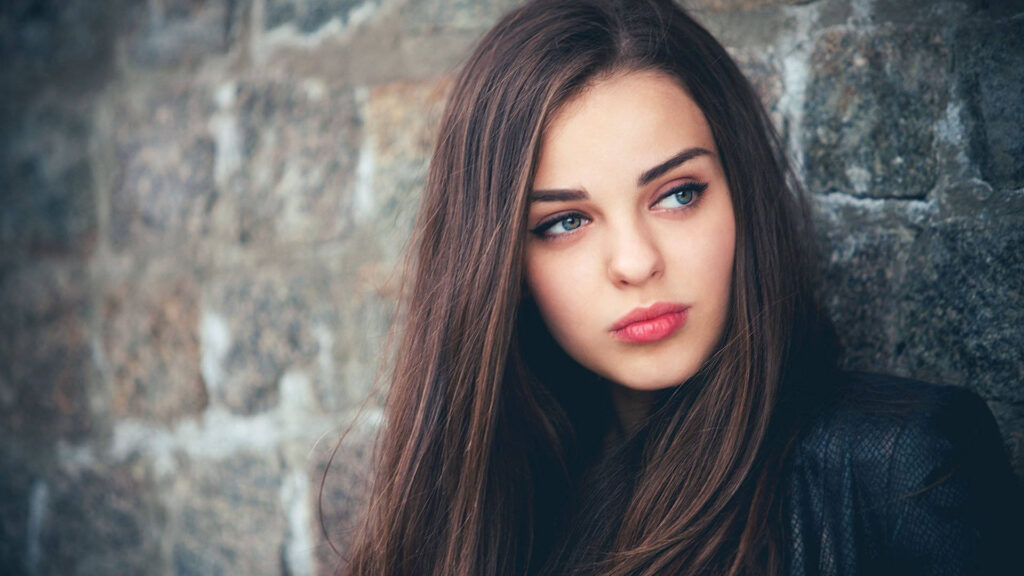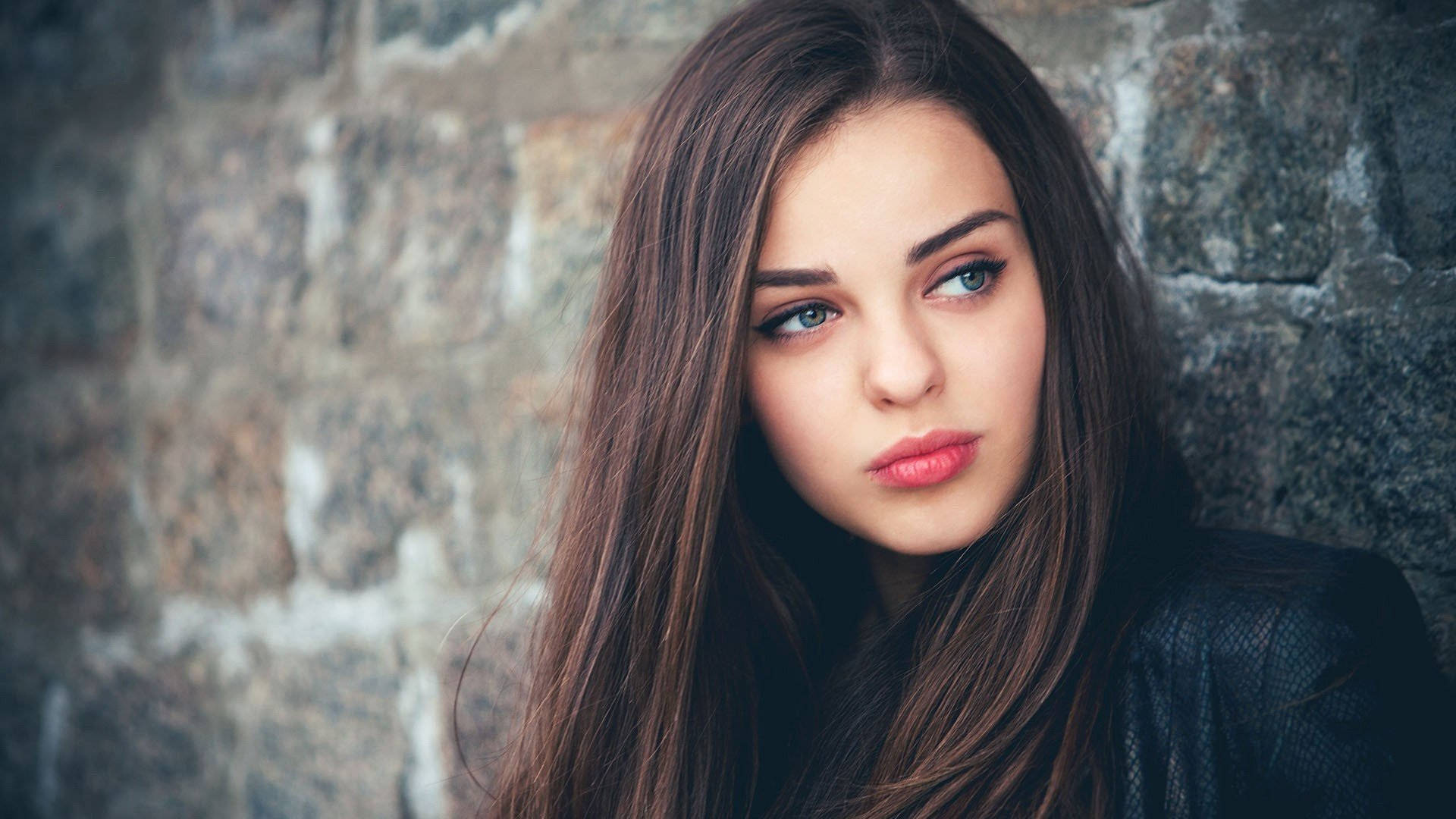
Hottie Brunette: Unveiling the Allure, Exploring the Beauty Standards
In a world saturated with fleeting trends and ever-evolving beauty standards, the term “hottie brunette” remains a captivating subject. It evokes images of striking features, alluring personalities, and a timeless appeal. This comprehensive guide delves into the multifaceted nature of the “hottie brunette” archetype, exploring its cultural significance, dissecting the elements that contribute to its perceived allure, and offering a nuanced perspective on beauty and attractiveness. We aim to provide an insightful and respectful exploration, moving beyond superficial observations to understand the deeper psychology and societal influences at play. From the history of brunette representation in media to the science behind attraction, we’ll uncover the layers of meaning behind this enduring ideal.
Decoding the “Hottie Brunette”: A Comprehensive Exploration
Defining the term “hottie brunette” requires more than just a dictionary definition. It transcends mere physical characteristics, encompassing a complex interplay of perceived beauty, personality traits, and cultural influences. While the literal definition refers to an attractive woman with brown hair, the term carries significant cultural weight, often associated with specific stereotypes and expectations.
The Evolution of the Brunette Ideal
Historically, brunettes have been portrayed in diverse roles, ranging from the virtuous and intelligent to the mysterious and seductive. In contrast to the blonde bombshell archetype, brunettes often represent groundedness, intelligence, and a quiet confidence. The perception of brunettes has evolved significantly over time, influenced by iconic figures in literature, art, and cinema. Examining these historical representations provides valuable context for understanding the modern interpretation of “hottie brunette.”
The Science of Attraction: What Makes a “Hottie”?
Attraction is a complex phenomenon influenced by biological, psychological, and social factors. Evolutionary psychology suggests that certain physical traits are universally considered attractive because they signal health, fertility, and good genes. These traits often include symmetry, clear skin, and a healthy body mass index. However, cultural and individual preferences also play a significant role in determining what is considered attractive. The “hottie brunette” archetype often embodies a combination of these universally appealing traits and culturally specific beauty standards.
Beyond Physical Appearance: The Role of Personality and Confidence
While physical appearance is undoubtedly a factor, the term “hottie” encompasses much more than just looks. Personality, confidence, and charisma are equally important components of attractiveness. A woman who exudes confidence, intelligence, and a positive attitude is often perceived as more attractive, regardless of her physical features. The “hottie brunette” archetype often embodies these qualities, projecting an aura of self-assurance and inner strength.
The Impact of Media and Culture on the “Hottie Brunette” Image
Media and popular culture play a significant role in shaping our perceptions of beauty and attractiveness. From Hollywood actresses to social media influencers, the media bombards us with images of idealized beauty standards. The “hottie brunette” archetype is frequently represented in media, often portrayed as intelligent, ambitious, and independent. While these representations can be empowering, they can also contribute to unrealistic expectations and pressure to conform to narrow beauty standards.
Iconic Brunette Figures in Film and Television
Throughout film and television history, numerous brunette actresses have captivated audiences with their beauty, talent, and charisma. Actresses like Audrey Hepburn, Elizabeth Taylor, and Natalie Portman have all contributed to the enduring appeal of the brunette archetype. These iconic figures have challenged stereotypes, redefined beauty standards, and inspired generations of women. Analyzing their impact on popular culture provides valuable insights into the evolution of the “hottie brunette” image.
The Influence of Social Media and Digital Culture
Social media has revolutionized the way we perceive beauty and attractiveness. Platforms like Instagram and TikTok have created new opportunities for individuals to showcase their unique styles and challenge traditional beauty standards. However, social media can also perpetuate unrealistic expectations and contribute to feelings of insecurity and self-doubt. The “hottie brunette” archetype is prevalent on social media, often presented in highly curated and filtered images. It is crucial to approach these representations with a critical eye, recognizing that they often do not reflect reality.
Challenging Stereotypes and Promoting Body Positivity
It is essential to challenge harmful stereotypes and promote body positivity in the context of the “hottie brunette” archetype. Beauty comes in all shapes, sizes, and colors, and it is crucial to celebrate diversity and individuality. The term “hottie brunette” should not be used to exclude or marginalize women who do not conform to narrow beauty standards. Instead, it should be used to celebrate the unique beauty and strengths of all women.
The Psychology of Attraction: Decoding the “Hottie” Factor
Understanding the psychology of attraction is crucial for comprehending the complexities of the “hottie brunette” archetype. Attraction is influenced by a combination of conscious and unconscious factors, including evolutionary biology, social conditioning, and personal preferences. By exploring these factors, we can gain a deeper understanding of why certain individuals are perceived as more attractive than others.
The Role of Evolutionary Biology in Attraction
Evolutionary psychology suggests that certain physical traits are universally considered attractive because they signal health, fertility, and good genes. These traits often include symmetry, clear skin, and a healthy body mass index. However, evolutionary biology is not the sole determinant of attraction. Social and cultural factors also play a significant role.
The Impact of Social Conditioning on Beauty Standards
Social conditioning plays a significant role in shaping our perceptions of beauty and attractiveness. From a young age, we are exposed to messages that reinforce certain beauty standards and marginalize others. These messages can be internalized, leading to feelings of insecurity and self-doubt. It is crucial to challenge these internalized messages and promote a more inclusive and diverse definition of beauty.
The Influence of Personal Preferences on Attraction
Personal preferences play a significant role in determining who we find attractive. These preferences are influenced by a variety of factors, including our upbringing, experiences, and values. What one person finds attractive, another person may not. It is important to recognize and respect the diversity of personal preferences.
Confidence as a Defining Feature of a “Hottie Brunette”
Confidence is arguably one of the most attractive qualities a person can possess. It radiates from within and influences how others perceive us. A woman who exudes confidence is often perceived as more attractive, intelligent, and capable. In the context of the “hottie brunette” archetype, confidence is often seen as a defining feature.
The Power of Self-Assurance and Self-Acceptance
Self-assurance and self-acceptance are essential components of confidence. A woman who is comfortable in her own skin and embraces her unique qualities is often perceived as more attractive. This self-acceptance allows her to project an aura of authenticity and genuine self-esteem.
Developing Confidence: Practical Tips and Strategies
Confidence is not an innate trait; it is a skill that can be developed over time. There are numerous practical tips and strategies that can help individuals build their confidence, including practicing self-care, setting realistic goals, and challenging negative self-talk. By actively working on building their confidence, women can enhance their overall attractiveness and well-being.
The Link Between Confidence and Charisma
Confidence and charisma are closely linked. A confident woman often possesses a natural charisma that draws others to her. This charisma can be expressed through her body language, communication style, and overall demeanor. By cultivating their confidence, women can enhance their charisma and create a more positive and engaging presence.
The Enduring Appeal of the “Hottie Brunette”: A Timeless Classic
Despite ever-changing beauty trends, the “hottie brunette” archetype continues to hold a timeless appeal. This enduring appeal is due to a combination of factors, including the perceived intelligence, groundedness, and quiet confidence associated with brunettes. The “hottie brunette” represents a classic beauty standard that transcends fleeting trends and continues to captivate audiences.
Brunettes in Art and Literature: A Historical Perspective
Throughout history, brunettes have been celebrated in art and literature. From the Renaissance paintings of dark-haired Madonnas to the literary heroines with raven locks, brunettes have been portrayed as symbols of beauty, intelligence, and virtue. Examining these historical representations provides valuable context for understanding the enduring appeal of the “hottie brunette.”
The Modern Interpretation of the Brunette Ideal
The modern interpretation of the “hottie brunette” archetype embraces diversity and individuality. It celebrates women who are confident, intelligent, and passionate about their lives. The modern “hottie brunette” is not defined by narrow beauty standards but by her inner strength, self-assurance, and unique personality.
Celebrating Diversity and Individuality
It is crucial to celebrate diversity and individuality in the context of the “hottie brunette” archetype. Beauty comes in all shapes, sizes, and colors, and it is essential to embrace the unique qualities that make each woman beautiful. By promoting a more inclusive and diverse definition of beauty, we can challenge harmful stereotypes and empower women to embrace their true selves.
Q&A: Addressing Common Questions About “Hottie Brunette”
Here are some frequently asked questions about the concept of “hottie brunette,” addressing common curiosities and misconceptions:
- What specific hair shades qualify as “brunette”? While definitions vary, typically brunette encompasses shades from light brown to dark chocolate, excluding black. Variations like auburn or bronde can also fall within this spectrum depending on the overall tone.
- Is there a specific age range associated with being considered a “hottie brunette”? No, attractiveness isn’t limited by age. The term applies to women of various ages who possess the described qualities.
- Does ethnicity play a role in the perception of a “hottie brunette”? The term is not exclusive to any ethnicity. Brunettes exist across all racial and ethnic backgrounds, and attractiveness is subjective and culturally influenced.
- Are there specific personality traits commonly associated with “hottie brunettes”? While stereotypes exist, personality is individual. However, confidence, intelligence, and a sense of humor are often seen as attractive qualities that complement the physical appearance.
- How has the perception of “hottie brunettes” changed over time? Historically, brunettes have been portrayed in various ways, from the girl next door to the femme fatale. Modern perceptions are more diverse and inclusive, celebrating individuality and strength.
- What are some common misconceptions about “hottie brunettes”? One misconception is that they are less glamorous than blondes. This is a harmful stereotype that ignores the diversity and beauty of brunettes.
- How can someone enhance their natural brunette beauty? Focus on healthy hair, skincare, and a style that complements their features. Confidence and self-care are key.
- What is the difference between a “hottie brunette” and a “bombshell brunette”? “Bombshell” often implies a more overtly sexualized image, while “hottie” can encompass a broader range of attractive qualities.
- Are there any famous examples of “hottie brunettes” who have challenged beauty standards? Many celebrities, like Audrey Hepburn and Emma Watson, have redefined beauty standards with their intelligence, talent, and unique style.
- How can we promote a more inclusive and diverse representation of “hottie brunettes” in media? By supporting media that celebrates diversity and challenges stereotypes, and by promoting positive body image and self-acceptance.
Conclusion: Embracing the Allure of the “Hottie Brunette”
The term “hottie brunette” represents more than just a physical description; it embodies a complex interplay of beauty, personality, and cultural influences. By exploring the history, psychology, and social impact of this archetype, we can gain a deeper understanding of its enduring appeal. It is crucial to challenge harmful stereotypes and promote a more inclusive and diverse definition of beauty, celebrating the unique qualities that make each woman beautiful. Ultimately, the allure of the “hottie brunette” lies in her confidence, intelligence, and unwavering self-acceptance. Share your thoughts on the evolving beauty standards in the comments below.

